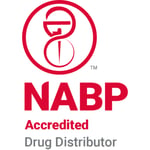In its simplest form, unit-dose repackaging means placing every individual medication dose into its own package, labeled and bar-coded. The pharmacist must repackage a bulk shipment of drugs (for example, a bottle of 100 tablets) into 100 separate doses. Sound simple? Maybe, but think about everything that’s involved in that process.
- Time: The pharmacist or pharmacy technician must be completely dedicated to that task.
- Space: The pharmacy must have room to repackage the drugs that come into the hospital or health center.
- Resources: These costs include purchasing and maintaining packaging equipment, packaging materials, labels and printers.
- Other considerations: Don’t forget about other ancillary needs, from cleaning everything between packaging runs, maintaining quality control, managing expiration dating for each drug, finding storage space and keeping up with FDA regulations on every drug that is repackaged.
By the way, this must be done for all medications on site. In fact, medication errors caused by packaging mistakes are well-documented, with one study showing a 1.3% error rate with lots packaged in-house.
How Does Unit-Dose Repackaging Work?
Whether a hospital or health system repackages medications in-house or outsources the process to another vendor, they first purchase medications through their wholesaler. The medications are delivered either to the hospital/health system or the repackaging facility to be repackaged into varying formats such as:
- Unit-dose oral solids
- Liquid unit-dose cups
- Oral syringes
- ENFit syringes
Variation continues within each format, as well. For solids, will repackaging include strips or blister packs? How many sizes of cups are needed for oral liquids, and how many different sizes of syringes are needed? Each format requires different labeling and bar coding requirements as well.
How Does a Hospital or Health System Work With a Unit-Dose Repackaging Vendor?
If a hospital or health system opts to outsource unit-dose packaging, it’s imperative that the vendor’s repackaging and bar coding formats support all pharmacy systems and scanning hardware.
For example, labeling is crucial for patient safety. Different labeling formats can include:
Drug lettering: Tall Man lettering is automatically included in all applicable drug labels based on the FDA and ISMP Tall Man lists. All drug names begin with a capital letter (unless Tall Man dictates differently).
Hazardous medications/USP <800>: Vendors should automatically apply the word “Hazardous” to unit-dose drug labels for repackaged medications on the NIOSH list. Yellow package options can also help to further differentiate hazardous oral solid medications.
Light sensitive medications: Light sensitive medications are packaged with light protective component materials (amber) to meet USP standards as required and when available.
Expiration dating: All repackaged drug labels contain the expression “EXP” to designate the drug expiration with the proper assigned date to follow (EXP MM/DD/YY). In addition, the vendor should have a risk-based stability study program to support expiration dating.
Drugs requiring refrigeration: If the drug requires a condition of storage of 2-8 degrees Celsius, the word “Refrigerate” is stated on the drug label.
Drugs including salt: The drug name on labels include salt when necessary and required (e.g., Amiloride HCl).
Rx items: As required, all Rx items will have Rx-Only printed on the drug label.
Controlled substances: Controlled substances must include the appropriate controlled substance symbol (i.e., C-II, C-III, etc.).
Brand designation: Unit-dose labels all use the generic name of the drug on the top line of the label. If the product is a brand name drug, the label also includes the brand name (in parentheses) on another line.
Alcohol content: Alcohol content is included on liquid unit-dose cup and oral syringe labels. “Alcohol free” is included if stated on the original manufacturer label. Liquids with an alcohol content greater than 10 percent cannot be put into syringes (cups only).
Units of measurement: The FDA requires the use of metric units of measurement — micrograms (mcg) or milligrams (mg). Reputable vendors like Safecor Health include both metric measurements and international units (IU) for easier equivalency determination whenever possible.
When a hospital or health system considers the expense of labor, materials, equipment, maintenance, and waste due to expiration dating, it’s easy to realize in-house repackaging may no longer be the obvious option.
That’s why Safecor Health offers a safer, more cost-effective and higher-quality method for repackaging pharmaceuticals. Outsourcing unit-dose repackaging with Safecor Health reduces costly burdens of packaging in-house and eliminates added capital expenditures. The biggest benefit of repackaging with Safecor Health adds up to so much more than cost savings by allowing pharmacy staff to focus on what truly matters: the patients.
Partnering with Safecor Health for unit-dose repackaging for your hospital or health system can help save your pharmacy anywhere from $400 to $700 per patient bed. Check out our free ROI calculator to see how much your pharmacy can save.


